Headlines
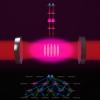 JILA researchers recently demonstrated that when an array of multi-level atoms is placed in an optical cavity, the atoms can all cooperate and collectively suppress their emission of light. This "quantum dark state" is inherently entangled, a property that makes it even more attractive for future quantum technologies.
JILA researchers recently demonstrated that when an array of multi-level atoms is placed in an optical cavity, the atoms can all cooperate and collectively suppress their emission of light. This "quantum dark state" is inherently entangled, a property that makes it even more attractive for future quantum technologies.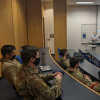 The group from CUbit included Philip Makotyn, executive director of CUbit, and Joshua Combes, associate professor of photonics and quantum engineering at CU Boulder. The visit symbolized an important step in beginning discussions between the Air Force Academy and the Colorado quantum ecosystem.
The group from CUbit included Philip Makotyn, executive director of CUbit, and Joshua Combes, associate professor of photonics and quantum engineering at CU Boulder. The visit symbolized an important step in beginning discussions between the Air Force Academy and the Colorado quantum ecosystem.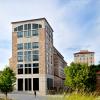 CU Boulder’s high-impact physics research and education will receive additional funding as part of the recently passed $1.5T federal omnibus bill. The funding will pay for much-needed research equipment in the JILA instrument and electronics shops, as well as the Keck Metrology and Clean Room Core Facility.
CU Boulder’s high-impact physics research and education will receive additional funding as part of the recently passed $1.5T federal omnibus bill. The funding will pay for much-needed research equipment in the JILA instrument and electronics shops, as well as the Keck Metrology and Clean Room Core Facility. JILA and NIST Fellow Ralph Jimenez and his team have reported a new experimental setup to search for the cause of a mysterious fluorescent signal that appears to be from entangled photon excitation. The results suggest that hot-band absorption (HBA) by the molecules could be the potential culprit.
JILA and NIST Fellow Ralph Jimenez and his team have reported a new experimental setup to search for the cause of a mysterious fluorescent signal that appears to be from entangled photon excitation. The results suggest that hot-band absorption (HBA) by the molecules could be the potential culprit. Colorado Governor Jared Polis and delegates from Finland recently signed an MOU to create collaborative partnership opportunities focused on foreign direct investment and research and development projects in quantum science, as well as company expansion opportunities and exchanges.
Colorado Governor Jared Polis and delegates from Finland recently signed an MOU to create collaborative partnership opportunities focused on foreign direct investment and research and development projects in quantum science, as well as company expansion opportunities and exchanges.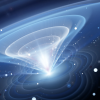 The CUbit Quantum Initiative today welcomed the first four strategic industry allies to formally join as CUbit Innovation Partners: Atom Computing, ColdQuanta, Meadowlark Optics and SPIE, the international society for optics and photonics.
The CUbit Quantum Initiative today welcomed the first four strategic industry allies to formally join as CUbit Innovation Partners: Atom Computing, ColdQuanta, Meadowlark Optics and SPIE, the international society for optics and photonics.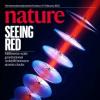 New experiments at JILA, recently published in Nature, allow physicists to study time dilation at the smallest scale ever, suggesting how to make atomic clocks 50 times more precise than today’s best designs—and offering a route to perhaps revealing how relativity and gravity interact with quantum mechanics.
New experiments at JILA, recently published in Nature, allow physicists to study time dilation at the smallest scale ever, suggesting how to make atomic clocks 50 times more precise than today’s best designs—and offering a route to perhaps revealing how relativity and gravity interact with quantum mechanics. Bethany Wilcox, assistant professor of physics, has won $745K in support of a project to develop tools that can be used to improve teaching of quantum mechanics. Additionally, Assistant Professor Andrew Lucas won $500K in support of a project to predict new kinds of fluids that can exist in nature.
Bethany Wilcox, assistant professor of physics, has won $745K in support of a project to develop tools that can be used to improve teaching of quantum mechanics. Additionally, Assistant Professor Andrew Lucas won $500K in support of a project to predict new kinds of fluids that can exist in nature.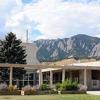 Created by NIST Boulder in 1991, the Professional Research Experience Program (PREP) provides valuable lab experience and financial assistance to undergrad, graduate and post-graduate students. Fellowships are awarded to assure continued growth and progress of science and engineering in the U.S.
Created by NIST Boulder in 1991, the Professional Research Experience Program (PREP) provides valuable lab experience and financial assistance to undergrad, graduate and post-graduate students. Fellowships are awarded to assure continued growth and progress of science and engineering in the U.S. CU Boulder Physics grad James Kellogg has extensive experience in the development of cold atom physics systems, the fastest growing area of quantum physics, and is the lead scientist for the integration of the Cold Atom Lab into launch vehicles and the International Space Station (ISS).
CU Boulder Physics grad James Kellogg has extensive experience in the development of cold atom physics systems, the fastest growing area of quantum physics, and is the lead scientist for the integration of the Cold Atom Lab into launch vehicles and the International Space Station (ISS).

